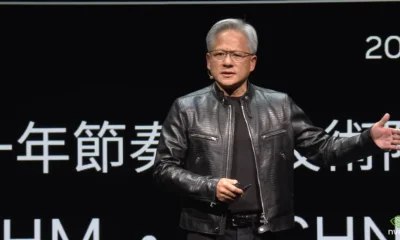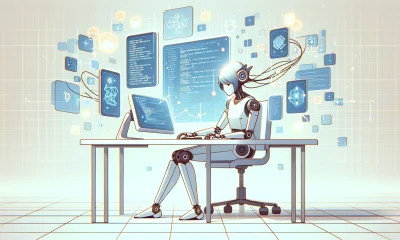Artificial Intelligence
Deep Learning Is Re-Shaping The Broadcasting Industry

Deep learning has become a buzz word in many endeavors, and broadcasting organizations are also among those that have to start to explore all the potential it has to offer, from news reporting to feature films and programs, both in the cinemas and on TV.
As TechRadar reported, the number of opportunities deep learning presents in the field of video production, editing and cataloging are already quite high. But as is noted, this technology is not just limited to what is considered repetitive tasks in broadcasting, since it can also “enhance the creative process, improve video delivery and help preserve the massive video archives that many studios keep.”
As far as video generation and editing are concerned, it is mentioned that Warner Bros. recently had to spend $25M on reshoots for ‘Justice League' and part of that money went to digitally removing a mustache that star Henry Cavill had grown and could not shave due to an overlapping commitment. The use of deep learning in such time-consuming and financially taxing processes in post-production will certainly be put to good use.
Even widely available solutions like Flo make it possible to use deep learning in creating automatically a video just by describing your idea. The software then searches for possible relevant videos that are stored in a certain library and edits them together automatically.
Flo is also able to sort and classify videos, making it easier to find a particular part of the footage. Such technologies also make it possible to easily remove undesirable footage or make a personal recommendation list based on a video somebody has expressed an interest in.
Google has come up with a neural network “that can automatically separate the foreground and background of a video. What used to require a green screen can now be done with no special equipment.”
The deep fake has already made a name for itself, both good and bad, but its potential use in special effects has already reached quite a high level.
The area where deep learning will certainly make a difference in the restoration of classic films, as the UCLA Film & Television Archive, nearly half of all films produced prior to 1950 have disappeared and 90% of the classic film prints are currently in a very poor condition.
Colorizing black and white footage is still a controversial subject among the filmmakers, but those who decide to go that route can now use Nvidia tools, which will significantly shorten such a lengthy process as it now requires that the artist colors only one frame of a scene and deep learning will do the rest from there. On the other hand, Google has come up with a technology that is able to recreate part of a video-recorded scene based on start and end frames.
Face/Object recognition is already actively used, from classifying a video collection or archive, searching for clips with a given actor or newsperson, or counting the exact time of an actor in a video or film. TechRadar mentions that Sky News recently used facial recognition to identify famous faces at the royal wedding.
This technology is now becoming widely used in sports broadcasting to, say, “track the movements of the ball, or to identify other key elements to the game, such as the goal.” In soccer (football) this technology, given the name VAR is actually used in many official tournaments and national leagues as a referee’s tool during the game.
Streaming is yet another aspect of broadcasting that can benefit from deep learning. Neural networks can recreate high definition frames from low definition input, making it possible for the viewer to benefit from better viewing, even if the original input signal is not fully up to the standard.














